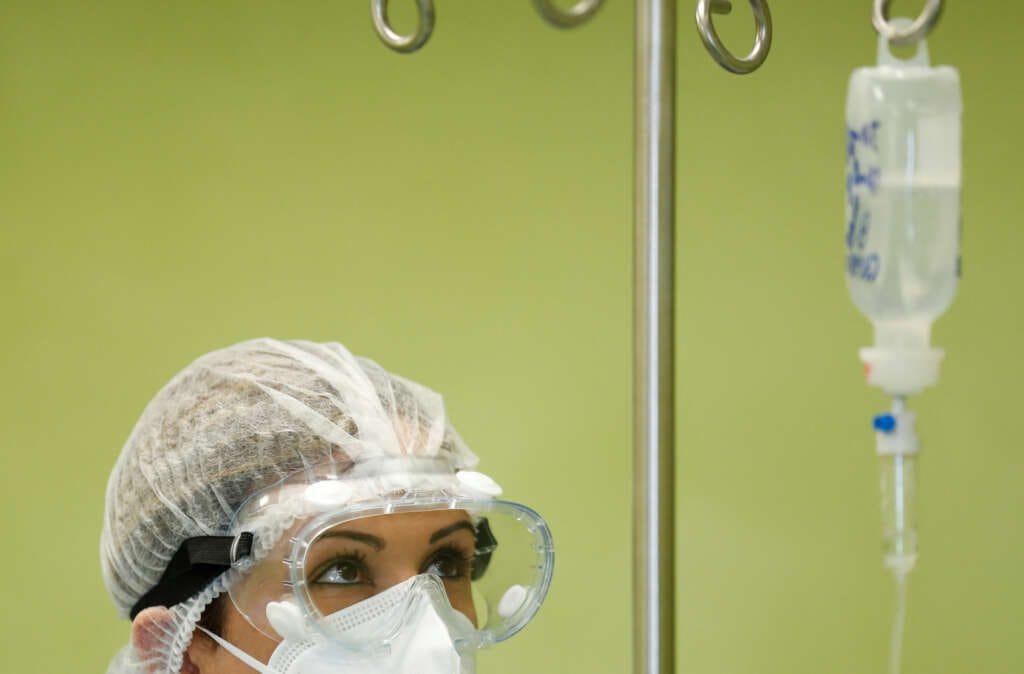
ROME (Reuters) – Italy’s government has warned that a shortage of doctors and nurses in the national health service represents a “real emergency”.
To help overcome the crisis, some hospitals are offering contracts to foreign medics to fill the gaps. However, health experts say this will provide only short-term relief and add that the sector faces problems that go well beyond staffing.
Many European countries with large, publicly funded health systems have come under strain since the COVID-19 pandemic. Here is comparative data for some European health metrics.
HEALTH SPENDING
Total health spending in both the private and public sector came in at 9% of GDP in Italy in 2022, according to data from the Organization for Economic Co-operation and Development (OECD), against 10.5% in Spain, 11.3% in Britain, 11.9% in France and 12.7% in Germany.
That equates to $4,291 in 2022 in Italy on a per capita basis, against $4,462 in Spain, $5,493 in Britain, $6,517 in France and $8,011 in Germany, the OECD says.
BEDS
One classic measure of health services is the number of hospital beds available to patients, although low number of beds might point to efficiency in the system, not necessarily crisis.
According to the OECD, Italy had 3.12 per 1,000 population against 5.65 in France and 7.76 in Germany. Spain had 2.96 beds, and Britain had 2.42.
DOCTOR AND NURSES NUMBERS
Italy has 4.2 doctors per 1,000 inhabitants as of 2021, against 3.4 in France, 3.2 in Britain and 4.5 in both Spain and Germany, the OECD says. However, Italian unions say large numbers of doctors have abandoned the public sector, for a variety of reasons, leading to shortages in key departments.
Italy also has the most rapidly ageing medical workforce in the EU. In 2021, nearly 40% of all doctors in the EU were aged 55 years and over, according to data released by Eurostat. In Italy that figure was 55.2% and roughly 25% were aged over 65, the highest proportion in Europe.
The OECD says Italy had 6.4 nurses per 1,000 inhabitants as of 2021, against 9.7 in France and 12.0 in Germany. Spain came in a little under Italy on 6.3, while Britain was at 8.7.
ATTRACTING FOREIGN WORKERS
Foreign-trained doctors made up just 0.94% of the total in Italy in 2019 against 12.3% in France, 13.8% in Germany and 31.9% in Britain, latest OECD data showed. By contrast, foreign-trained nurses made up 4.8% of the total in Italy in 2019 against 2.9% in France, 8.9% in Germany and 15.4% in Britain.
DOCTOR AND NURSES SALARIES
Italian specialist doctors earned 2.9 times the country’s average income in 2020, while in Germany the ratio was 3.4, in Britain 3.3, and in Spain 3.0, latest OECD data showed. In France the ratio was 2.2. By contrast, nurses in Italy earned the equivalent of the country’s average wage in 2020, as did their British counterparts. Spanish nurses earned 1.5 times the average wage, Germans 1.1 times and French nurses 0.9 times.
Unions say a doctor working in an Italian hospital has an average net take-home pay of 2,800 euros ($2,935) a month, while public sector nurses make on average between 1,600-1,700 euros.
($1 = 0.9537 euros)
(Reporting by Crispian Balmer; Editing by Daniel Flynn)


